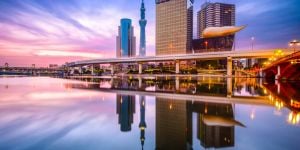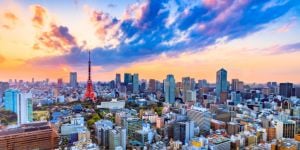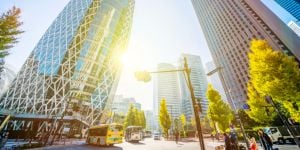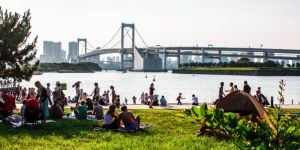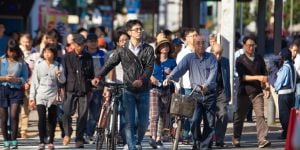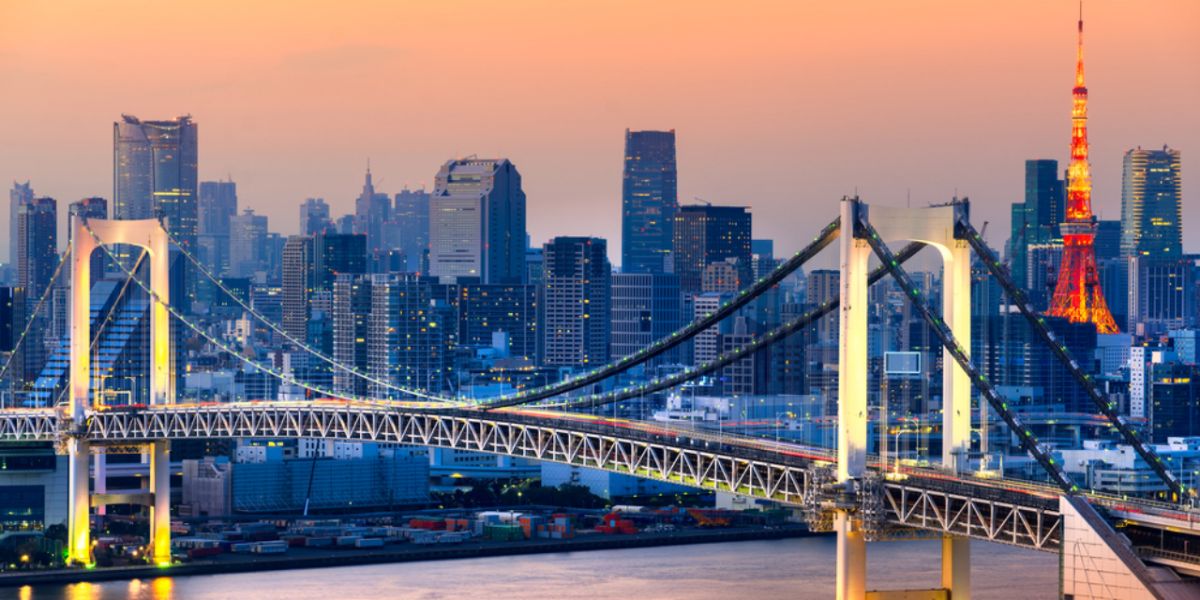
You will discover the different facets of the Japanese capital by visiting the very touristy districts of Shibuya, Shinjuku, or Harajuku, up to the more remote areas of Fussa or Ome. In fact, the Tokyo Metropolitan Prefecture gave its name to the capital of the Land of the Rising Sun. Here is a practical guide for future expatriates in Tokyo.
Mapping Tokyo
You may also have heard about Greater Tokyo and Tokyo Metropolis when discussing Tokyo. These terms might be confusing to many people.
Greater Tokyo, also known as the Tokyo–Yokohama Metropolitan Area, is a large urban region located on the Pacific coast of Honshu Island in central Japan, along the Northern and Western shores of Tokyo Bay. The central part of this region is the metropolitan prefecture, or Tokyo Metropolis, which is Japan's capital and largest city.
The remaining parts of the complex are made up of three prefectures: Saitama to the North, Chiba to the East, and Kanagawa to the South.
When people refer to "Tokyo", they usually mean the 23 wards that make up the city itself. In 1943, the city ceased to exist as a separate administrative unit and became part of the larger Tokyo metropolis. This metropolis includes not only the city but also rural and mountainous regions to the West, the Izu Islands to the South, and the Bonin (Ogasawara) Islands, which are located about 500 miles southeast in the Pacific Ocean.
There are three other major cities within the metropolitan area. Yokohama, the second largest city in Japan, is about 20 miles southwest of Tokyo. Kawasaki, an industrial city, is situated between Tokyo and Yokohama. Both Yokohama and Kawasaki are located in Kanagawa prefecture. Chiba, another heavily industrialized city, is located in Chiba prefecture to the East of Tokyo, along the northeast coast of the bay.
Municipalities within Tokyo
Tokyo includes 23 special wards, 26 cities, 5 towns, and 8 villages. However, due to the high population density and urban connectivity in the 23-special-ward area, a unique administrative system exists between the metropolitan government and the wards. This system differs from the usual relationship between prefectures and municipalities.
The metropolitan government has specific administrative duties in the 23 wards, such as water supply, sewerage services, and firefighting, to provide reliable and effective services. Meanwhile, the wards are free to handle matters that directly impact residents' lives, such as welfare, education, and housing, on their own (source: Metro Tokyo).
The 23 wards of Tokyo
Tokyo is made up of 23 wards called "ku":
- Shinjuku-ku;
- Shibuya-ku;
- Nakano-ku;
- Toshima-ku;
- Bunkyo-ku;
- Chiyoda-ku;
- Chuo-ku;
- Minato-ku;
- Koto-ku;
- Sumida-ku;
- Taito-ku;
- Arakawa-ku;
- Kita-ku;
- Itabashi-ku;
- Nerima-ku;
- Suginami-ku;
- Setagaya-ku;
- Meguro-ku;
- Shinagawa-ku;
- Ota-ku;
- Adachi-ku;
- Katsushika-ku;
- Edogawa-ku.
Tokyo in figures
According to the Tokyo Metropolitan Government, the population of this area as of Jan 1st, 2024, is 14,105,098, an increase of 70,237 compared to the same month last year. By region, Tokyo, the capital city, has 9,791,293 people; 4,236,430 in other cities, 54,101 in the counties, and 23,274 in the islands. Among them, a total of 647,416 foreign residents lived in the area (source: Population in Tokyo 2024).
History of Tokyo
A unique administrative division
In the middle of World War II, in 1943, the military government decided to do away with the wider city of Tokyo. From then on, in a strictly administrative sense, the city of Tokyo no longer existed. What remained were only its 23 districts. It is nowadays called "prefecture-capital" or "metropolitan prefecture". This change has had no impact on the inhabitants' daily lives, but it explains why it is so difficult to quantify the population. Tokyo has become an area with a unique urban administrative division.
Legacy of the past
This unique urban division is a legacy of the past. During the 12th century, Edo Shigenaga, a member of the Shigenaga clan, decided to settle his fief in a small fishing village to which he gave his name, "Edo", which means "gate of the river". By the 17th century, Edo had become one of the major cities in Asia. The Meiji era began in 1868, and the industrial revolution was underway. Edo became Tokyo, "the capital of the East".
Tokyo's climate
Tokyo's climate is subtropical and humid, with fairly mild winters. Temperatures are almost always positive, and summers are very hot and humid. Spring is the time of the blossoming of the Japanese cherry trees, with delicate pinkish flowers called sakura. Autumn is the season of Momiji, the Japanese maple tree flower.
The cost of living in Tokyo
Many people say that life is expensive in Tokyo. While the cost of living is higher than in other cities in Japan, it is quite possible to enjoy a decent life in the capital. Rent and transportation in Tokyo are the most important expenses. On the other hand, food is cheap, and that includes restaurants. You can find many full meals for less than 1000 yen.
There is a myth about fruits and vegetables being expensive in Japan. You can buy cheap fruits and vegetables by buying local, seasonal, and in-season produce in the local supermarkets. For example, you can buy 1 kg of daikon (a large Japanese radish) for less than 200 yen. For the same price, you can get 2 kg of bean sprouts, and tofu costs a handful of yen.
To reduce accommodation costs in Tokyo, it is better to live away from the city center. The cities of Fussa or Hachioji are less expensive. Closer to the center of Tokyo, the districts of Nakano, Toshima, Itabashi, or Taito can be affordable solutions too. Besides, accommodation is cheaper in the neighboring prefectures (Saitama, Kanagawa, Chiba). In any case, you need to consider the cost of transportation because, in Japan, it varies according to the distance. The more you travel, the more expensive it is.
Nature in Tokyo
Almost every district has its own green spaces. In Bunkyo, the Korakuen garden is a true national treasure. In Shinjuku, Shinjuku-gyoen is one of the largest parks in Tokyo. Yoyogi and Meiji-Jingu gardens offer well-deserved green breaks not far from the busy Harajuku district.
More about Tokyo
If Tokyo were a tree, it would be a ginkgo biloba. This tree is everywhere present in the city. As a matter of fact, the Tokyo Metro company has taken the ginkgo leaf as its logo.
Tokyo's plan for the future
The Tokyo Metropolitan Government unveiled a new plan called Future Tokyo in 2021: Tokyo's Long-Term Strategy, which outlines the path for the city's development and aims to create a promising future for Tokyo. This strategy focuses on four key approaches:
- looking ahead through a backcasting approach;
- collaborating with various organizations to implement policies;
- embracing digital transformation to achieve a Smart Tokyo;
- being adaptable to changes.
By presenting a vision for Tokyo in the 2040s, along with strategies for the 2030s and corresponding projects, the government aims to build a sustainable Tokyo that combines stability with continuous growth.
Tokyo is working on several key projects to shape the future of the city. One of these projects is the Tokyo Bay eSG Project, which focuses on sustainable urban development in the Bay Area for the next 50 to 100 years, integrating nature and convenience.
Another critical project is the initiative to achieve Zero Emission Tokyo and establish a Hydrogen Society by 2050. Additionally, Tokyo is striving to become a "Global Financial City" by leveraging its strengths and establishing itself as a financial hub in Asia and the world.
Useful links:
We do our best to provide accurate and up to date information. However, if you have noticed any inaccuracies in this article, please let us know in the comments section below.
